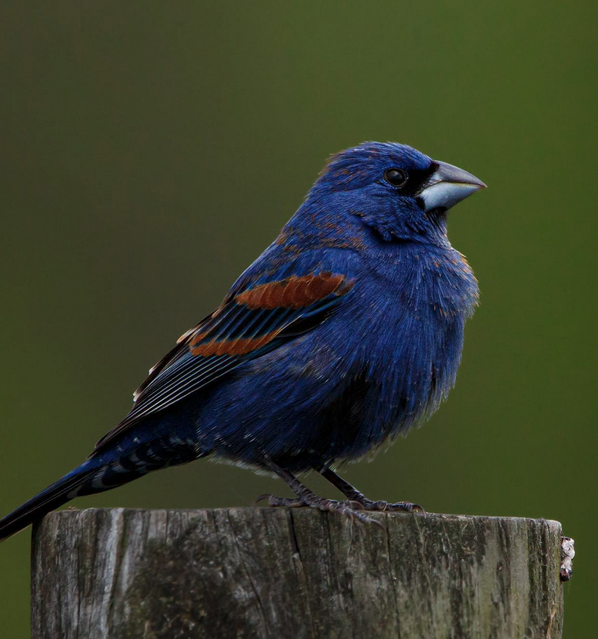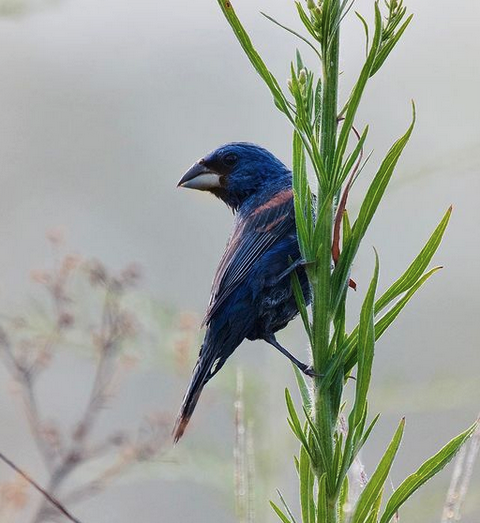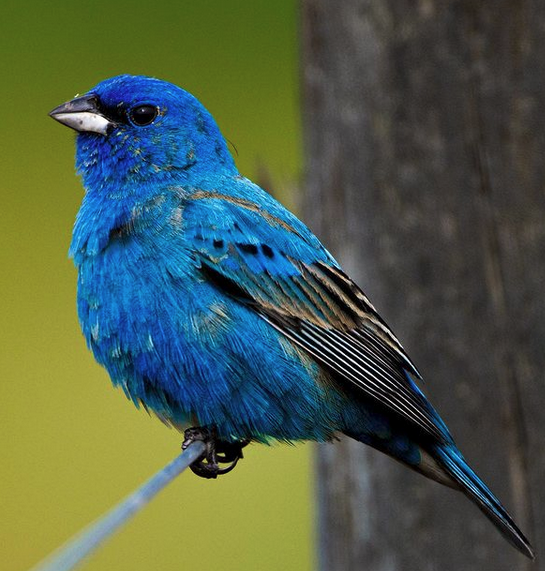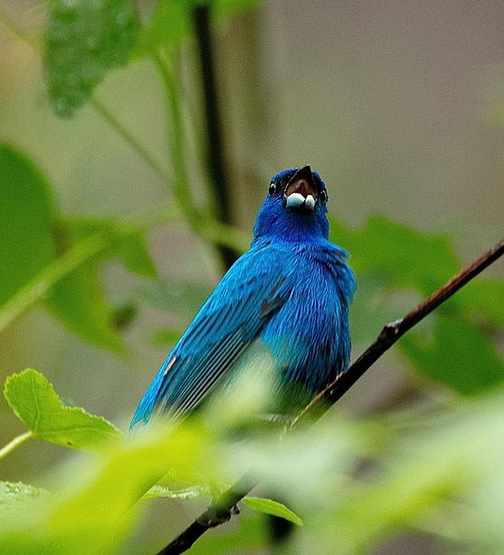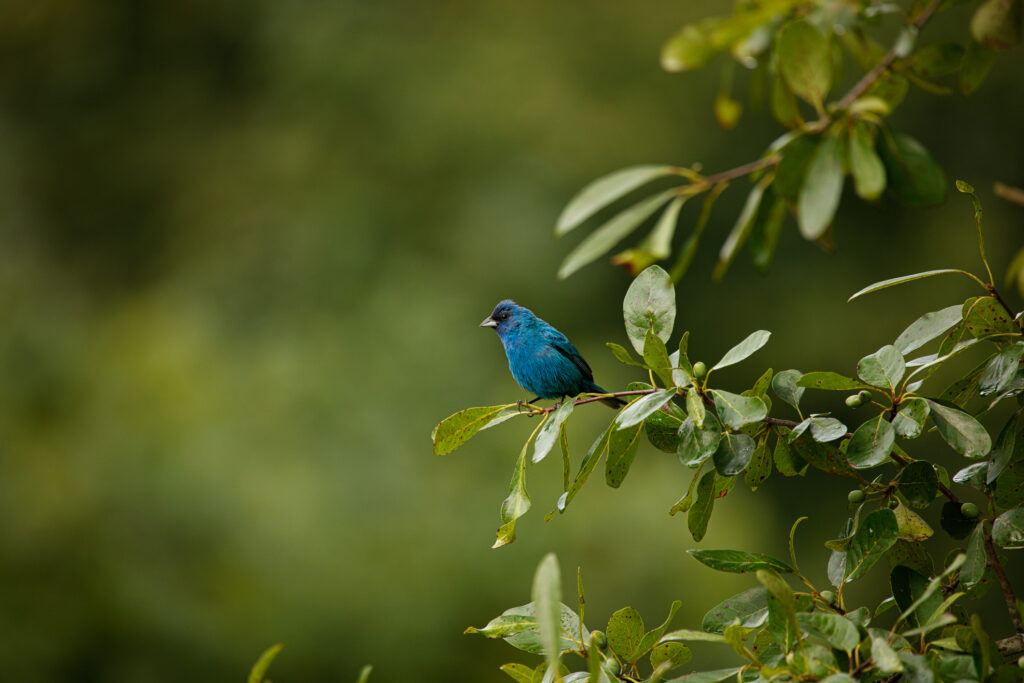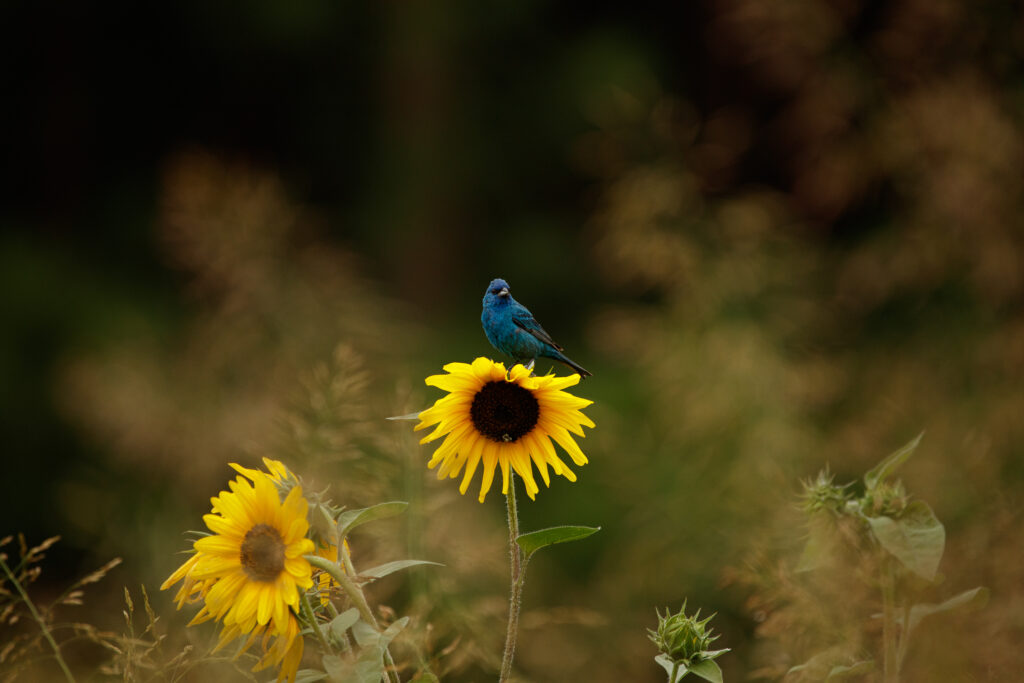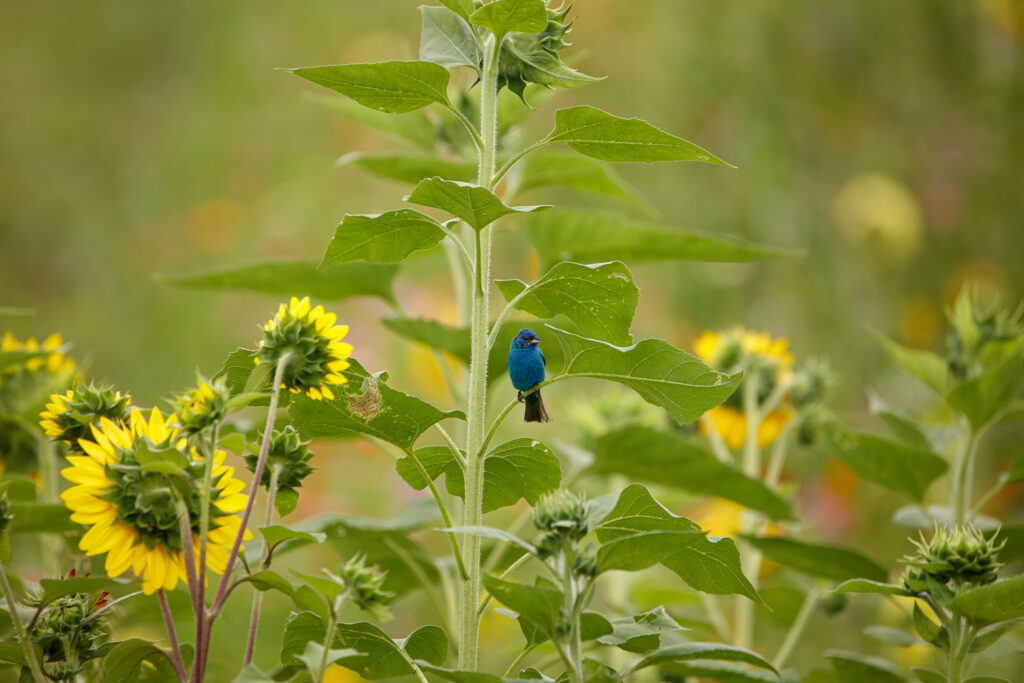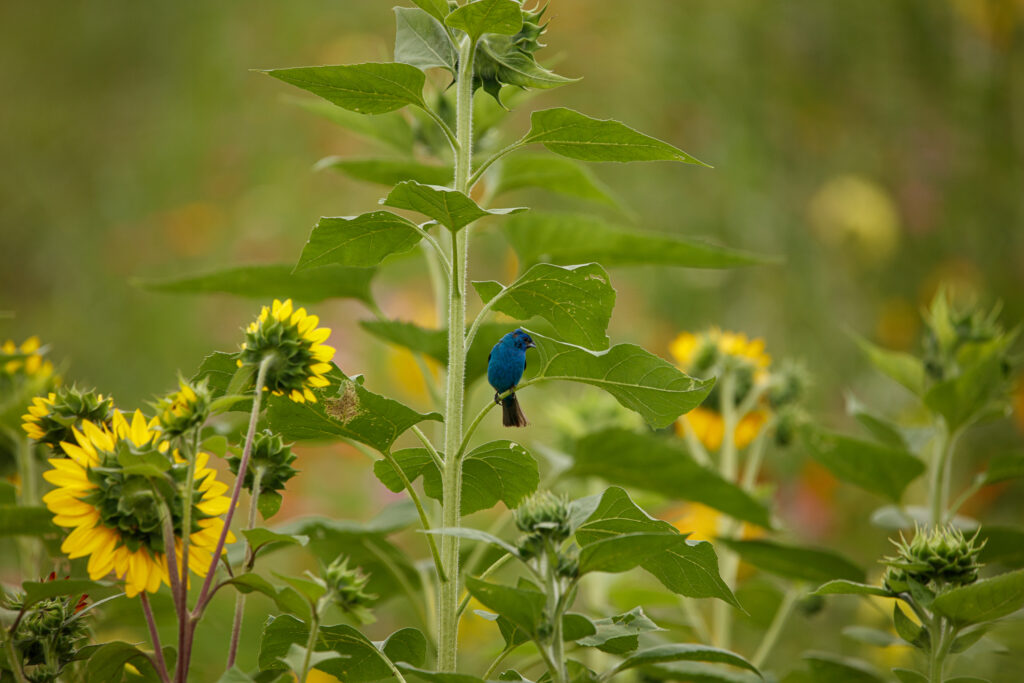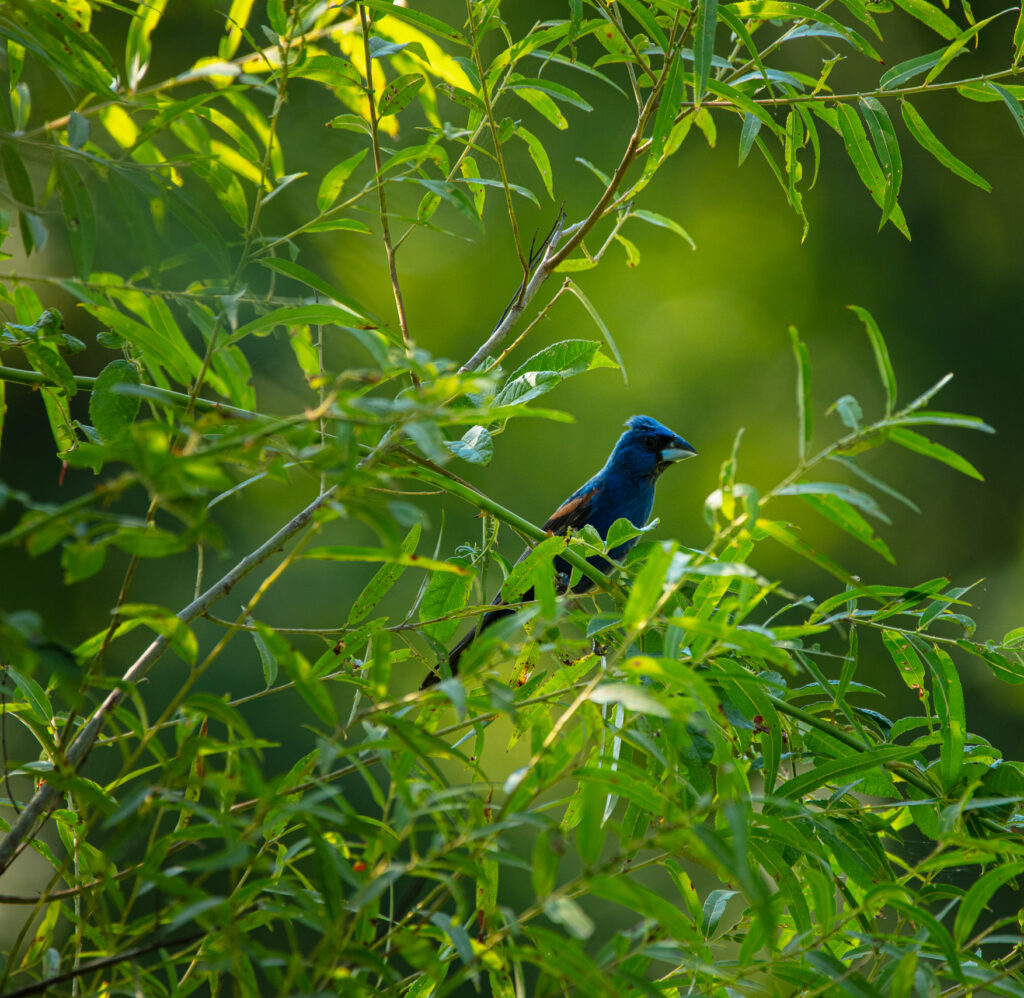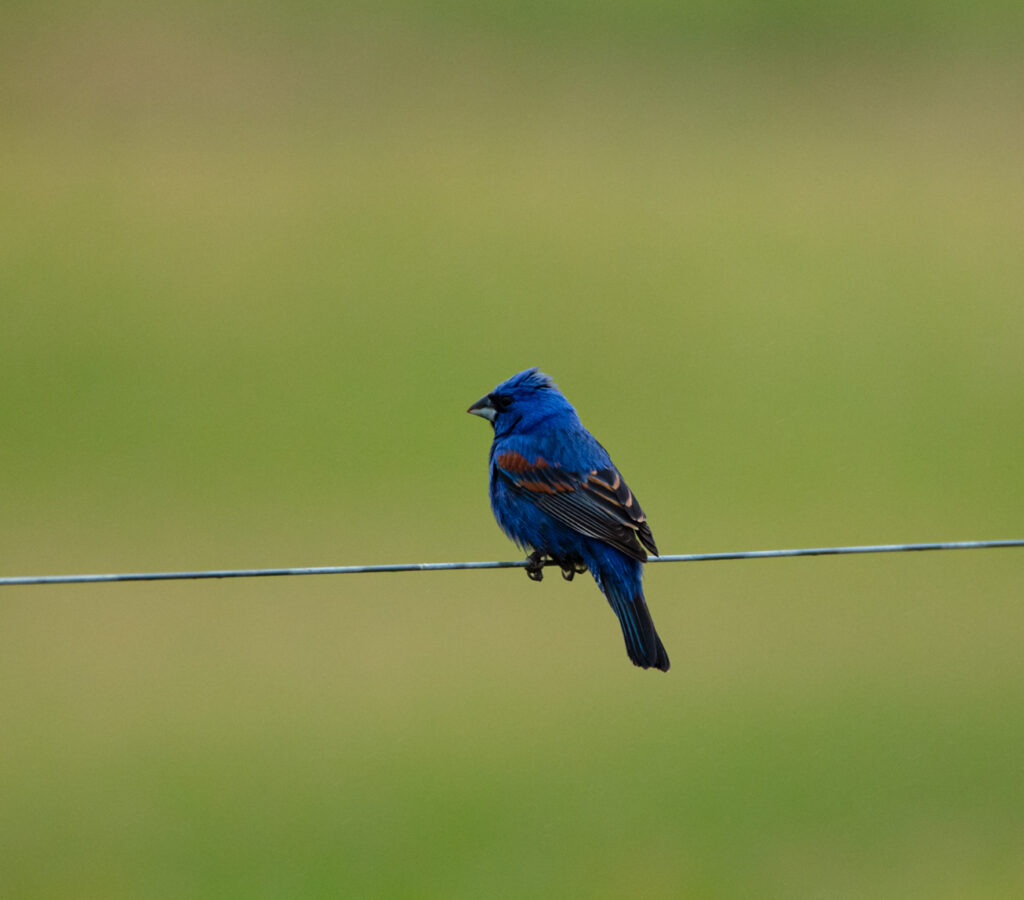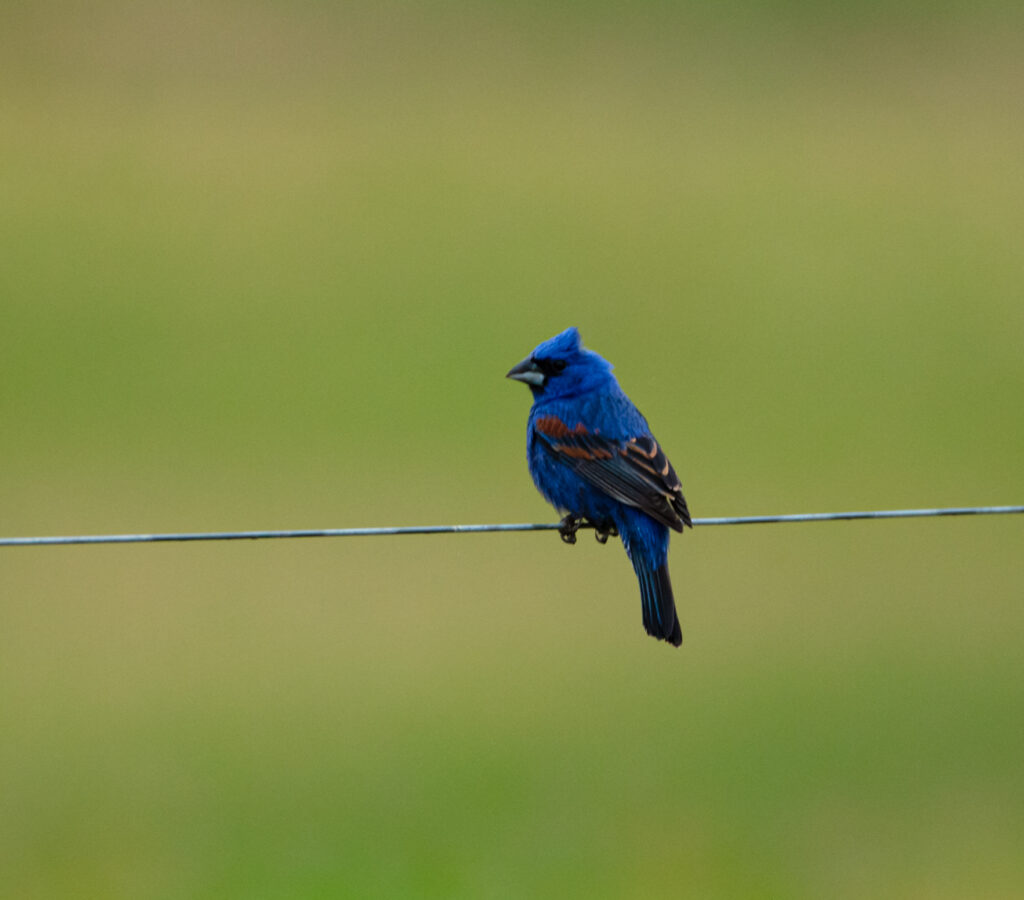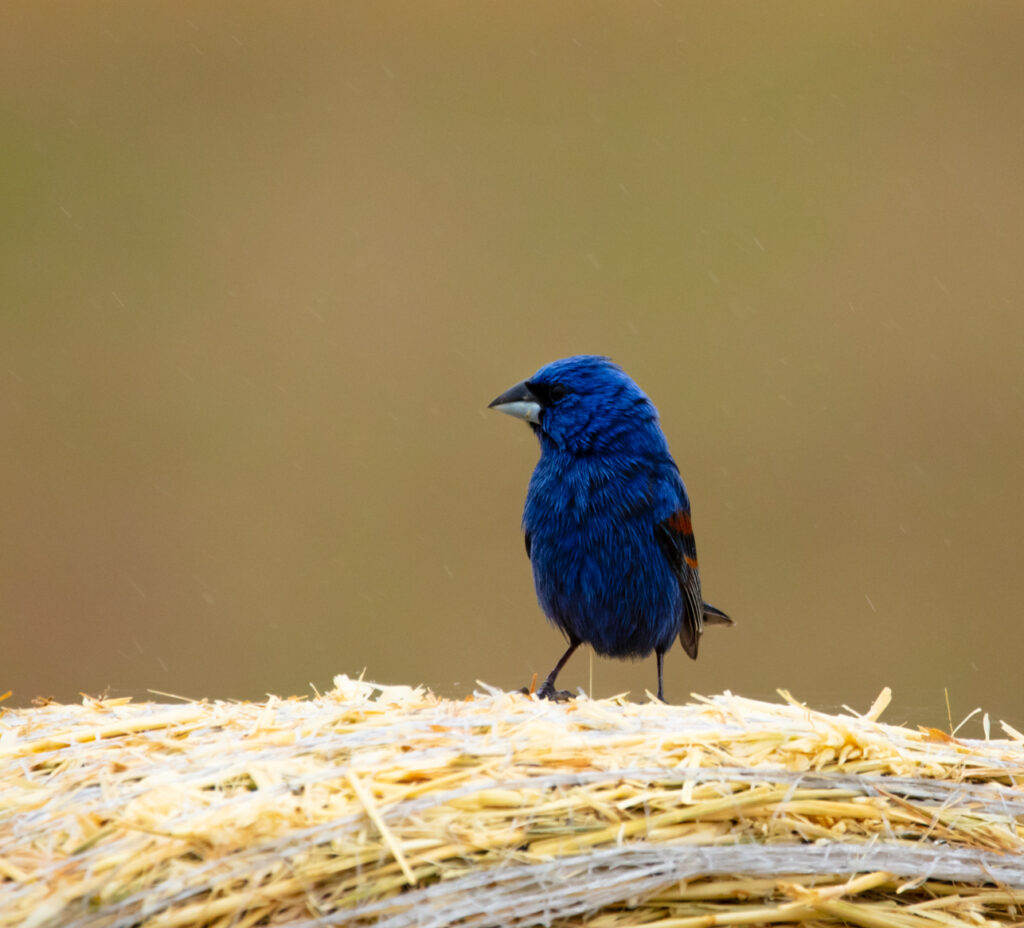By Sally Siko
The thing about bird photography is this, birds don’t always cooperate haha!
I went to the sunflower field at Dorothea Dix Park in Raleigh NC last week to try and catch a few photos of an Indigo Bunting perched on a sunflower.
Unfortunately the birds weren’t in the mood to grant my wishes as most of the time the Buntings were either sitting on top of this lone cornstalk or flitting through the leaves in search of a meal.
In the end I opted to try and get a portrait of one *near a sunflower (nice colors) so this is what I came away with lol!
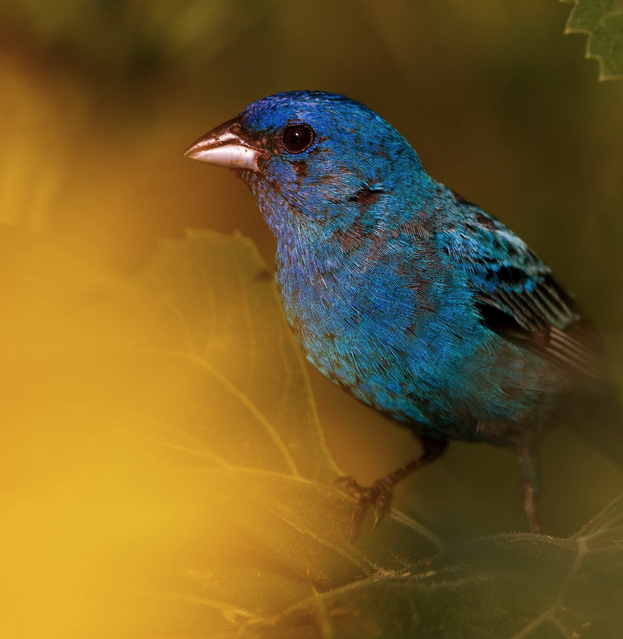
Speaking of color, these brightly colored feathered gems are named for their deep sea-blue plumage that looks like indigo dye. The males appear to be blue with a tinge of black on the face, wings and tail. Females are toned in a lovely tannish-brown.
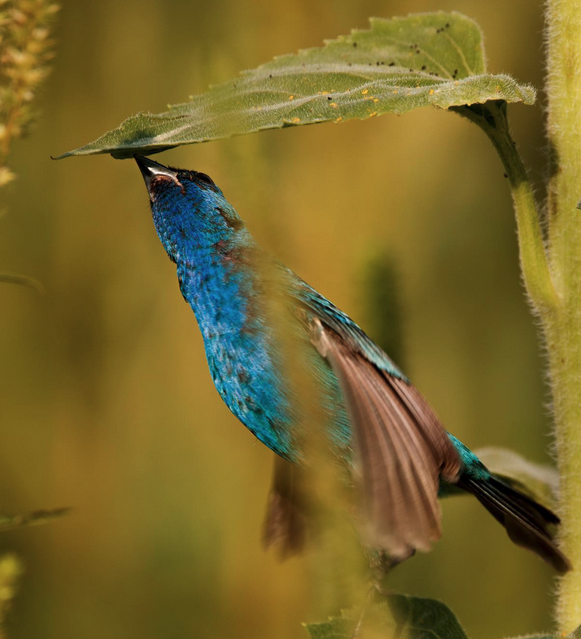

Although this bunting is known for its rich hues, that blue color on the males is actually a trick of light.
Believe it or not, adult male indigo buntings in full breeding plumage are covered in black feathers, but thanks to the diffraction of light by the feather structure, they appear to be a brilliant blue, a colour that changes from black to blue to turquoise as the angle of reflected light changes.
Pretty neat, huh?
Photos by @sally_siko of @bestlife_birding on my beloved full frame 50MP beast, the mighty @canonusa #5Ds


